#Japanese pop culture
Explore tagged Tumblr posts
Text



#pharrel williams#pharrell#bape#bapesta#skateboarding#nigo#2000s aesthetic#2000s core#2000s style#2000s fashion#awge#playboi carti#old kanye#kanye west#lil uzi vert#2000s#hip hop#music#louis vuitton#ice cream#bbcicecream#y2k style#y2k nostalgia#y2kcore#pop culture#japanese pop culture#streetwear#streetwear archive#y2k#y2k fashion
93 notes
·
View notes
Text
Harajuku 🍢🍭 Takeshita Street






#Harajuku Station#Takeshita Street#Harajuku#Japanese Pop Culture#Fashion#Shopping#Shibuya#Tokyo#Japan
16 notes
·
View notes
Text
Thinking About the “Othering” of Japanese Media

For those who keep up with Japanese video games, you may have heard comments from a prominent Japanese video game producer about how a certain term labeling a video game genre felt discriminatory in his own eyes. A recent Polygon article about that term made me think about how the Western media has “othered” Japanese pop culture media for as long as I remembered.
The producer I’m talking about is Final Fantasy XIV and XVI producer, Naoki Yoshida (known as Yoshi-P to his fans). Back in February 2023 in an interview, Yoshi-P said that the term “JRPG” (short for “Japanese RPG”) was considered discriminatory to him and his peers in the Japanese video game industry. Polygon took a look at how Japanese RPGs and JRPGs became a thing in the late ‘90s (starting with Final Fantasy VII’s North American release in 1997) and how media outlets in the West never seemed to take them too seriously. Even worse, the outlets shoved Japanese developers into a sub-category they never asked to be a part of once Japanese RPG popularity started to wane in the mid-2000s’.
After reading the article, I actually thought about manga and its perception when I first started reading comics. When I first discovered what manga was back in 1995, I learned about Ghost in the Shell from an issue of Wizard Magazine (a North American-based magazine highly dedicated to Western comics). The first thing that came to mind when I read what Wizard wrote was that it had a cybersex scene and very adult in nature. My mind was somewhat blown since I was in 7th grade at the time. Now that I think about it, almost 30 years later, I wonder if Wizard was trying to say that Japanese creators were super-perverted compared to Western creators. I still remember a non-fan a friend of mine met at Otakon one year who asked “Isn’t anime sexual?” when inquiring bout anime.
With regards to manga, for most of its history in the overall comics world, it has been othered in the U.S. due to how successful it’s been in reaching out to “non-traditional” comics-reading audiences. Statements like “Oh, it’s just a fad!” and “Manga doesn’t have dedicated buyers (i.e. adults with disposable income) like Western comics does!” were thrown to discredit manga’s popularity. Christopher Butcher (of Mangasplaining/TCAF fame) talked about this in a 2015 article on his website, which still holds some truth today. Even though manga sales have peaked around the pre-vaccine COVID time period, they are steady today. New York Comic-Con in 2022 had a substantial anime/manga presence compared to years past. Anime and manga can’t be ignored any longer.
Yet I know that some things haven’t changed in industry recognition. I will use the Eisner Awards as an example. For those who don’t know, it’s a prestigious awards ceremony that happens around San Diego Comic-Con every year and honors the best in comics. However, their recognition of manga is spotty. There has been recent criticism towards the Eisner committee for recognizing only the “hot” manga creators (i.e. the ones with best-selling manga titles on book charts). The best example I can give is Junji Ito. A lot of his works are nominated despite there being better works worthy of recognition out there. There has been some criticism in the manga circle I’m in about how Eisner judges/representatives don’t seem to take the time to explore the greater breadth of what manga has to offer in its new golden age.
Of course, when awards ceremonies like the Academy Awards don’t really seem to care much about praising Japanese pop culture media, what hope is there, right?
Which brings me to a point that the Polygon article elaborates on the West’s insistence on particular views of Japan.
“It’s clear that the mainstream only courts a specific idea of Japan as being acceptable — often reinterpretations of feudal Japan, largely spanning from the 1500s to late 1800s, when the samurai were still part of Japanese society.“
I do notice that Japan is supposed to be this “quirky” and “weird” place with wild imagination. If somehow a Japanese title has themes common in Western media/culture, but lacks the exotic style Westerners prefer, it’s sometimes heavily ignored in the mainstream eye. I don’t know. What do you guys think?
Polygon does mention that we’re living in some really good times with regards to Japanese video games being popular again. Many fans, including myself, know that too well. I enjoyed gaming again due to the variety of Japanese-developed titles that came out since 2016 (the start of the Japanese video game industry revival). I see parallels in manga and anime reception too. All of Japanese pop culture media is celebrated overseas. Fans that consume all things Japanese are living through amazing times.
That doesn’t mean that it’s going to last forever. I do know at some point, Western media will find new ways to scrutinize Japanese media and our time in the spotlight will fade again. Some degree of othering will always happen due to human nature and I know that we can use that term for positive purposes. Manga is about how “others” that are different from the norm can become celebrated by the world. Reading this post about manga reminds me that comics of any kind can cover any topic imaginable and definitely be made for “other” people to read.
28 notes
·
View notes
Photo
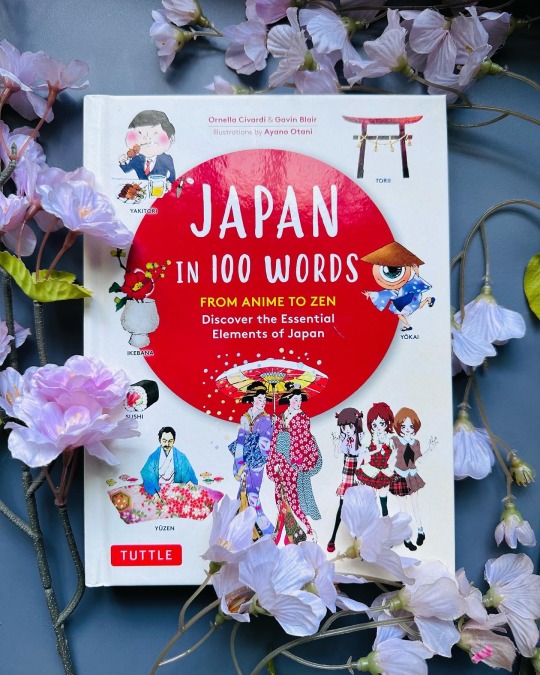

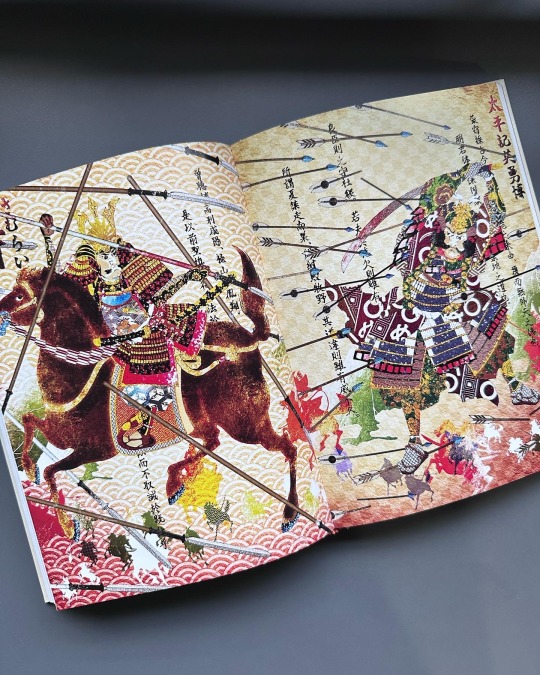



JAPAN IN 100 WORDS
The Encyclopaedia of Japan, from Anime to Zen. Take a tour of Japanese Culture in 100 words, from art, cuisine, festival, philosophy to pop culture with this illustrated dictionary.The artistic illustrations by Ayano Otani on every page give you an idea the topics which makes it a pleasant journey in understanding everything you want to know about Japan.To me, it’s a good foundation that let you know about Japan as a whole, both good and bad, before you read other books that cover more in depth details of various topics.
#japan in 100 words#japan#ayano otani#japanese art#japanese illustration#japanese culture#japanese tradition#japanese food#japanese philosophy#japanese pop culture#japanese festival#tuttle publishing#book review#book recommendations#japanese book
29 notes
·
View notes
Text
Tsuburaya Productions Announce Ultraman Arc, To Debut On TV Tokyo On July 6
Tsuburaya Productions Announce Ultraman Arc, To Debut On TV Tokyo On July 6 #ウルトラシリーズ #ウルトラマンアーク #ULTRAMAN #tokusatsu
Tsuburaya Productions announced yesterday afternoon that there would be a new Ultra Hero getting their own series. Ultraman Arc will be making its debut on TV Tokyo Network at 9:00 JST on July 6, 2024. Not only will it be simultaneously broadcast and distributed in six countries and regions overseas, but it will also be available in 11 different languages. The press release also noted an…

View On WordPress
#ウルトラシリーズ#ウルトラマンアーク#Fantasy#Japanese Pop Culture#Pop Culture#Sci-Fi#Superheroes#Tokusatsu#Tsuburaya Productions#TV Tokyo#Ultraman#Ultraman Arc#Ultraman Connection
2 notes
·
View notes
Text
I know of Akira Toriyama's work, but I don't know Akira Toriyama the person. I have no reason to otherwise believe though that Akira Toriyama was a great person.
Apologies for the off-tone post. But I've just been seeing so many, so many praises of Akira Toriyama on the Internet this past two days. I just need to screw my head back on straight again.
No disrespect to Akira Toriyama. And also no disrespect to all those heaping heaps and heaps of very deserving eulogic praise on Akira Toriyama.
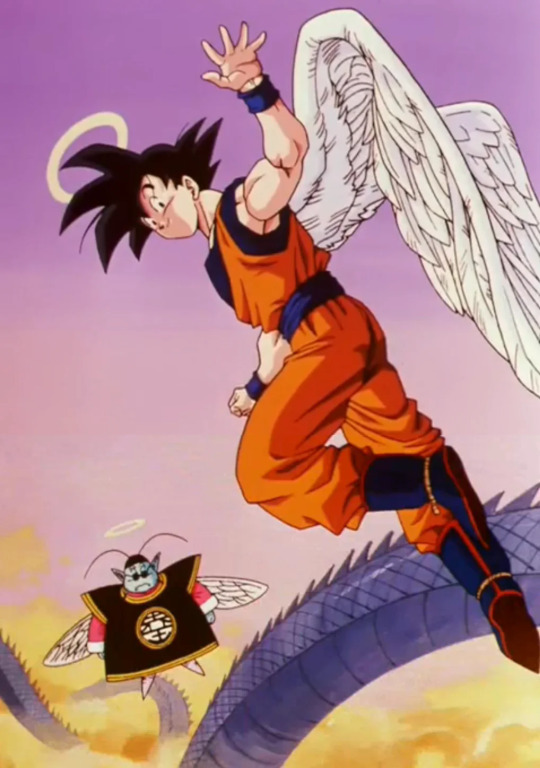

Artwork by Akira Toriyama and ig:octi_lfc
The Ringer: Dragonball creater Akira Toriyama had an unrivaled impact on anime
---
the many faces of Akira Toriyama:

artwork-collage from some Japanese magazine in the '80s or something...
4 notes
·
View notes
Text

Not all the videos on my YouTube channel and the other contents I upload online are readily available to everyone. I had to keep some of them out of public eye for obvious reasons. Most of these otome/joseimuke games that these contents are from are no longer officially available, so I'm trying to archive them (I'd also like to avoid directly addressing the titles here). There're also J-pop contents, mostly from the artists and groups of LDH JAPAN. Join my Discord server from the link below to get access to them.
#discord#discord server#otome game#otome games#joseimuke game#joseimuke games#joshimuke game#joshige#otoge#乙女ゲーム#j-pop#jpop#japanese pop#japanese pop culture#ldh japan
5 notes
·
View notes
Text
one of my favorite moments of Japan-Western pop cultural interaction (which is otherwise quite rare if one excludes video game stuff) is the fact that the theme song for the 2006 live-action Death Note movie was inexplicably fUCKING
DANI CALIFORNIA BY THE RED HOT CHILI PEPPERS
#death note#death note live-action (2006)#dani california#red hot chili peppers#rhcp#japanese pop culture#western pop culture#japan-western pop cultural interaction#anime#pop culture#like legit if you type デスノート 主題歌 into the youtube searchbar#the first result you’ll prolly get’s a static image video of Dani California sitting at 2.8 million views lmao#honorable mention goes to the time when PUFFY became children’s show stars in Cartoon Network (Puffy AmiYumi)
2 notes
·
View notes
Photo
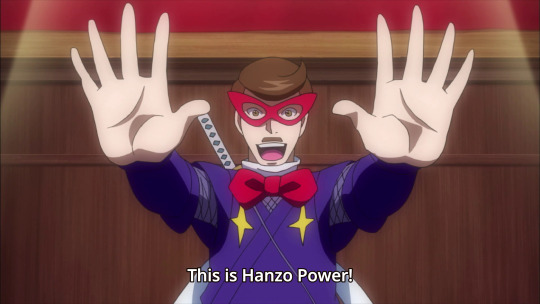
Explaining the joke: In Time Bokan 24′s fourteenth episode "The Ninja Hattori Hanzō Was Actually a ______!", the true history is that famed ninja Hanzo Hattori instead was a stage magician. While it might be easy to think the gag is that ninja magic like one sees in media was trick magic, it’s actually another goofy pun! Hanzo throughout the episode tells his audience that it’s his Hanzo Power ( ハンゾパワー) that lets him perform his magic.
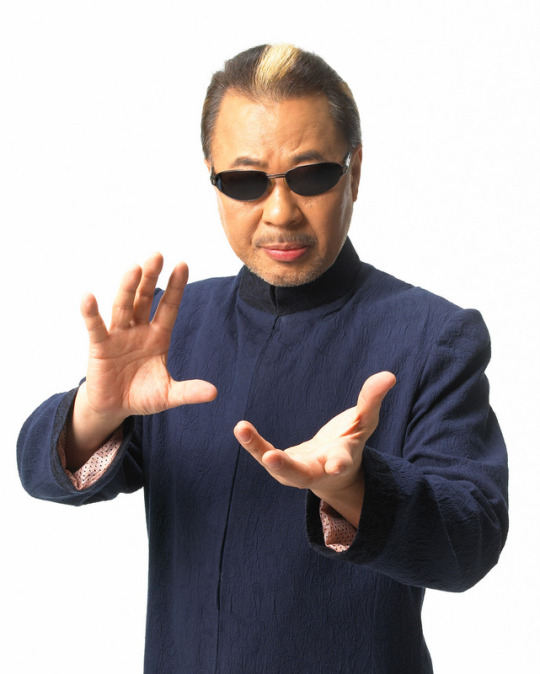
The popular Japanese magician Mr. Maric (Mr.マリック) has a signature phrase that he uses to describe what he uses to perform his illusions: Hand power (ハンドパワー)! This is overtly spelled out by Tokio when he initially mishears Hanzo’s technique as such! In addition, when Bimajo shows up to ruin the act, Tokio almost mistakenly identifies her as Mr. Maric!
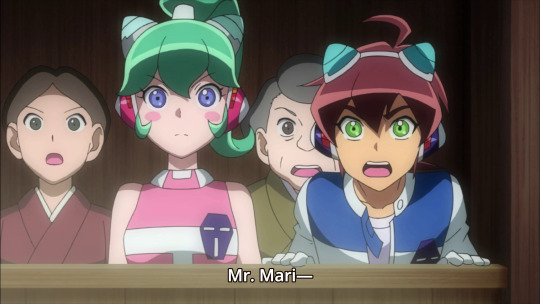
But it’s Bimajo who takes the reference and gag further...

Sporting a different outfit, Bimajo identifies herself as Dr. Bimajo while she goes on to explain the truth behind how every illusion is pulled off. This too...

...is a reference to Japanese magicians! Her outfit and name are evoking Dr. Leon (Dr.レオン), another popular illusionist who has performed his feats on all sorts of shows and stages. While both are relatively unknown in a casual Western audience, Dr Leon has even been involved with providing some trick ideas to David Copperfield. David Copperfield’s most famous trick, you might recall, was making the Statue of Liberty disappear before a live audience...
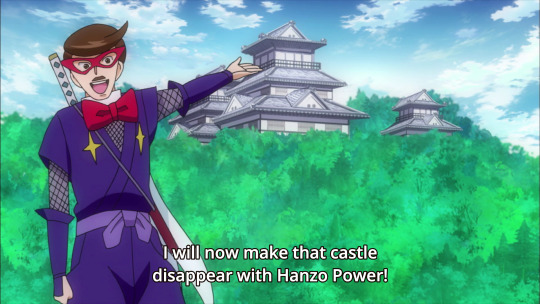
#time bokan 24#calen#tokio#bimajo#tsubuyakky#suzukky#hanzo hattori#mr maric#dr leon#david copperfield#magic#magicians#stage magic#reference#japanese pop culture#explaining the joke#hanzo power#hand power
11 notes
·
View notes
Text
Hey you! You weeb! I am writing my thesis and would like to see some international anime, manga and japanese pop-culture fans participating in this neat little survey I did. https://link.webropolsurveys.com/S/E3A949F0E438A9B1
I am a 3rd-year student in Haaga-Helia University of Applied Sciences. I study Tourism and Event Management in the international TEMPO class. The subject of my thesis is seichijunrei (聖地巡礼), also known as “anime pilgramige”. The aim of my thesis is to understand how anime and other Japanese fiction media entertainment effect a tourist in their decisions when choosing international destinations and visiting points of interest. I wish that anime and Japanese pop-culture fans, aswell as those who have participated in seichijunrei partake in this survey. All answers are handled anonymously with trust and good scientific conduct. Participants cannot be identified from their answers. Answering this survey takes around 15 minutes, and the survey can be accessed untill 2nd of October 23:59 or untill ~50 answers have been recorded. Participation to this survey is voluntary, and the answers provided will only be used for this thesis.
#anime and manga#japanese pop culture#weeaboo#thesis survey#hospitality industry#student thesis#i know tumblr likes science#help me make science#seichi junrei#anime pilgramige
2 notes
·
View notes
Text
Hatsune Miku: Exploring the Global Impact of Japan’s Digital Idol Across Cultures #HatsuneMiku #DigitalArt
Hatsune Miku: A Global Phenomenon Across Cultures Introduction Hatsune Miku, a vocaloid software developed by Crypton Future Media, has become a global icon since her debut in 2007. Known for her distinctive blue hair, futuristic appearance, and her ability to “sing” in a multitude of styles, Miku has transcended the boundaries of her origin in Japan. Her influence stretches far beyond the…
#Catalonia#Cross-Cultural Influence#Cultural Impact#Digital Art#Digital Idol#Global Phenomenon#Hatsune Miku#International Music#Japanese Pop Culture#Korea#Middle East#Navajo#Nigeria#South America#Vocaloid#Western Europe
1 note
·
View note
Text




Kanye West and Alexis Phifer for Harper’s Bazaar (2007)
#kanye west#yeezy#adidas#yeezy boost#old kanye#magazine#2000s web#2000s nostalgia#2000s#2000s fashion#awge#pop culture#streetwear#streetwear archive#2000s style#y2k fashion#y2k nostalgia#y2kcore#y2k#y2k moodboard#y2k aesthetic#asap rocky#playboi carti#opium#fashion#los angeles#y2k style#japanese pop culture#pop art#takashi murakami
35 notes
·
View notes
Text
Takeshita Street 🎸🎧 Harajuku



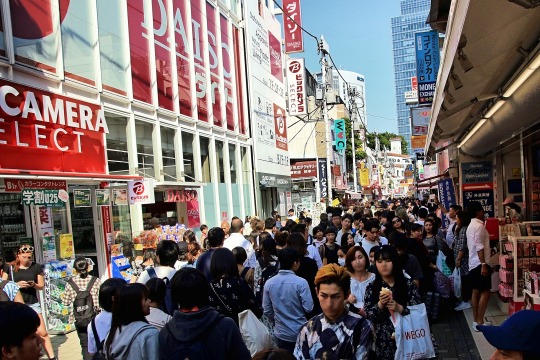

13 notes
·
View notes
Text
I went ahead and played a couple of demos
Here are my thoughts!
I Want to Believe - great music, terrible AI voice "acting". It's just google translate voices doing the characters.
Lost and Found Co. - incredibly short demo, tons of pop culture easter eggs, adorable af, tons of stuff to find, Blobfish Lifeguard is the star! I recommend this one for your Steam Wishlist.

#autism#actually autistic#disabled#disability#autistic#game demos#demos#game#Lost and Found Co.#blobfish lifeguard is the star#There are so many pop culture easter eggs in lost and found co#So many Miyazaki references#Japanese pop culture
1 note
·
View note
Text
Beyond the Expected Boundaries
#japanese language#japanese pop culture#japanese learner#japanese slang#japanese langblr#japonicaland
0 notes
Text
Toei Celebrates Kamen Rider Drive's 10th Anniversary
START YOUR ENGINE! 🚓💨 Toei Celebrates Kamen Rider Drive's 10th Anniversary #仮面ライダードライブ #ドライブ10周年 #KamenRider #KamenRiderDrive #Tokusatsu #Television
#Entertainment#Japanese Pop Culture#Japanese Superheroes#Kamen Rider#Kamen Rider Drive#Television#Toei Co. Ltd#Tokusatsu#TV Asahi#仮面ライダードライブ
1 note
·
View note